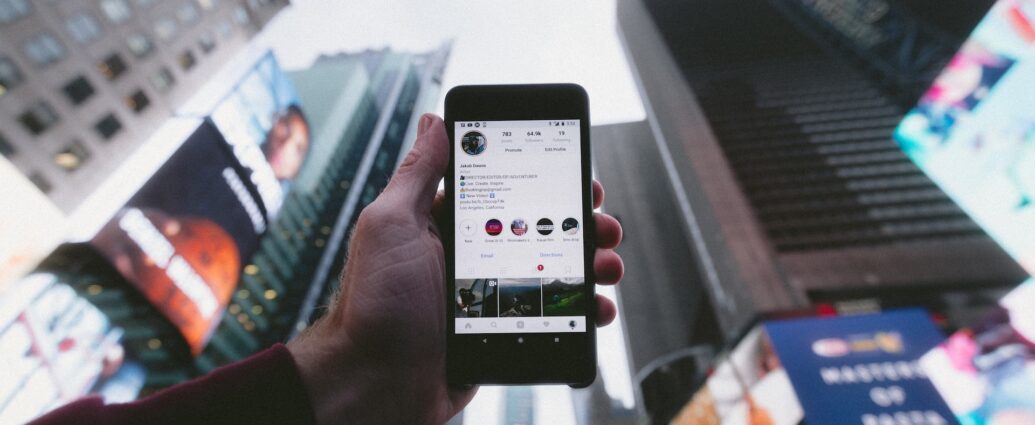Niladri Singh
As of October 2023, there are 5.3 billion internet users worldwide. Of this total, 4.95 billion are social media users. That means 61.4 per cent of the world’s population are posting online.
The phrase “the advent of the internet” is one that has been thrown around online for the best part of a decade, marking a period in which the internet has undergone a myriad of transformations. Recent data has even shown that social media users are now growing at a rate of 9.6 new users every single second.
For the most part, everyone who uses social media is both a consumer and a contributor. It is the prevalence and accessibility of the internet which makes social media a haven for our digital memories. Being on social media is like having a digital scrapbook, one that we may not fully own but it’s ours to decorate.
The continuous stream of content online, consumed via apps like TikTok and Instagram, has blurred the line between private and public. Para-social relationships are formed like never before. Even though social media holds no promise of tangible human connection, people are more willing than ever to put themselves on the internet.
Why, then, do we so freely share our lives on social media?
The Internet: A Recent History
The beginning of the internet, even in its most rudimentary form, was made to share and preserve information. But in 1991, when Tim Berners-Lee created the World Wide Web, it cast a new light on multiple fields. These included everything from computer science to data science, communications to psychology. It was a departure from the old and a step towards the new.
The world was steering into a new digital space. Communication was easier, with instant messaging and video calling services rapidly gaining popularity.
“There was a transformative shift, from the static World Wide Web to the Participatory or Social Web.”
In 1998, Open Diary was launched, making it the first blogging network that allowed users to post online in a personal capacity. The website acted as a prototype for current day social media apps. Users could post diary entries, which were open to comments.
By 1999, we were already ushering in the age of Web 2.0. There was a transformative shift, from the static World Wide Web to the Participatory or Social Web. This change resulted in the birthplace of social media as we now know it.
In the decade following Web 2.0, social media apps began to flood online stores, phones, and lives. In 2004, we were introduced to Facebook. Over the next 10 months, Facebook racked up a million active users.
Why We Share Online
Today, millennials and gen-z make up the majority of social media users around the world. Both these generations grew up with internet technologies as a part of their everyday lives. This makes both generations the first ‘digital natives’.
Digital natives have a greater tendency to share personal information than other groups. The average daily social media user is online for 151 minutes per day, up from 147 minutes in 2022. There are many reasons why we feel compelled to share online.
Research shows feelings of social isolation and anxiety mean digital natives are more comfortable communicating online than in real life. The need to belong is a fundamental driver of human behaviour. The fear of missing out (also known as FOMO) is one of the major reasons that people engage with social media. Humans want to belong, including in digital spaces.
Whether there is information about your favourite celebrity, the book you’ve been waiting for, or a new restaurant ‘everyone is talking about’, there is a huge section of society that cannot sleep on that information. They cannot risk missing out. Sharing our experiences, thoughts, and feelings online makes us feel like we belong.
Changing Cultures
Participatory culture on these platforms has made us more social online. It has brought about the rise of user-generated content, which has caused a seismic shift in marketing and advertisements for brands. We also feel compelled to respond to and comment on everything we see. Everyone wants to be part of the online ‘conversation’.
“We cannot let the fear of missing out online cause us to miss out on the life that patiently awaits us offline.”
The rise of influencer culture has also made social media a rat race for attention and social capital. Attention and retention are crucial to succeeding on social media. How much attention can you attract? If you want more of it, you’ve got to feed into the unending stream of content. This means continuously uploading and communicating online, building an online persona. If you aren’t posting constantly, you risk being lost in online oblivion.
Populist mantras like “pics or it didn’t happen” solidify the idea that we must share our experiences with others. Because if we aren’t validated by the internet audience, did it really happen? Is there really a point to living if it can’t be captured for aesthetics? Truth be told, there is.
The Importance Of Offline
In a world that is shifting its gaze online, we must remember to live in the moment. It’s important to live offline and create memories for memory’s sake, not for the sake of photos. We need to enjoy life without social media pressure. We cannot let the fear of missing out online cause us to miss out on the life that patiently awaits us offline.
Life is ours to build and break, to question and decipher. It goes far beyond gaining attention on social media and earning comments on a post. Don’t let anyone, online or offline, convince you otherwise.
READ MORE:
-
BE THE SAFE SPACE: HOW TO HELP A FRIEND WITH TRAUMA
-
REDIRECTING MEDIA NARRATIVES OF MENTAL HEALTH DISORDERS
-
WHY DO WOMEN SUPPORT ANDREW TATE?
Featured image courtesy of Jakob Owens on Unsplash. No changes were made to this image. Image licence found here.

